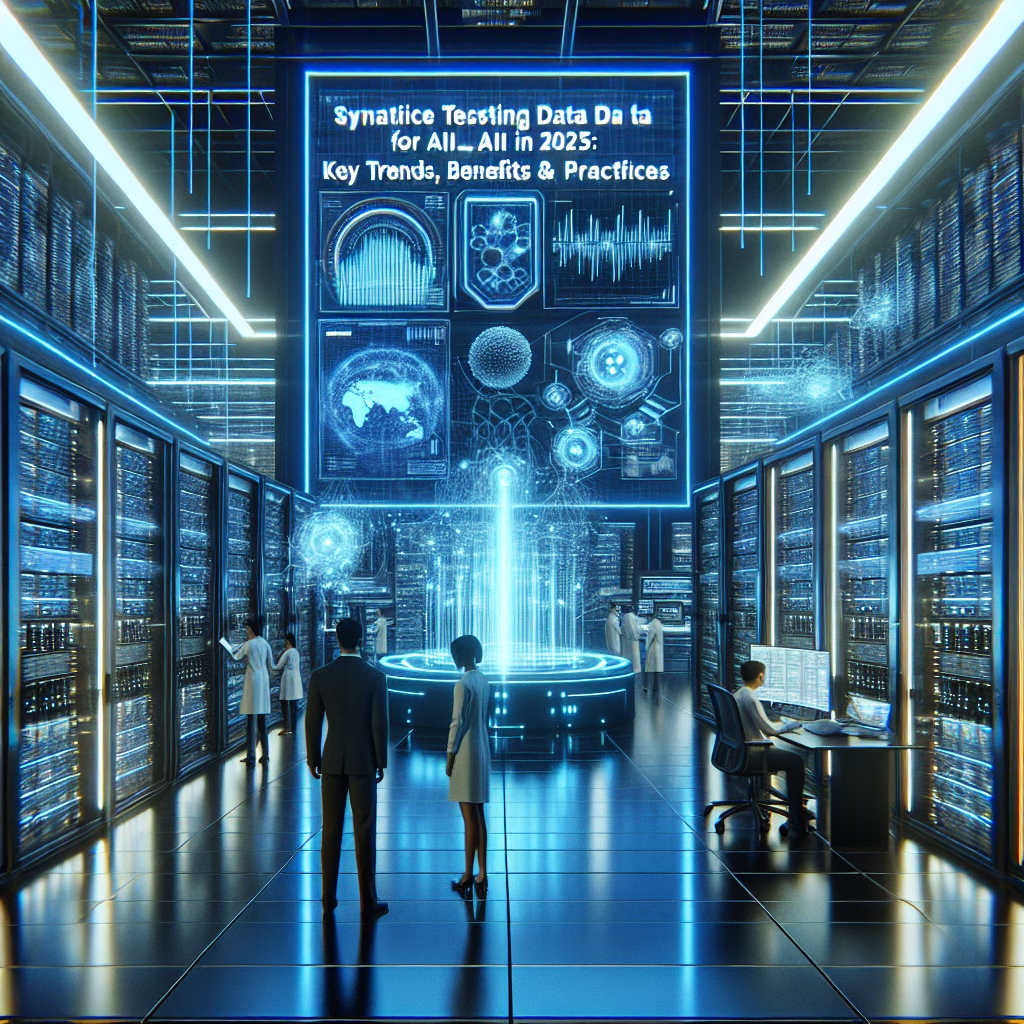Synthetic Testing Data for AI 2025
Summary:
Synthetic testing data is revolutionizing AI development by providing scalable, privacy-compliant datasets that mimic real-world scenarios. In 2025, advancements in generative AI and simulation tools will enable researchers and businesses to create high-fidelity synthetic datasets to train and validate AI models more efficiently. This method allows for improved bias mitigation, edge-case testing, and faster model iteration without relying on expensive or restricted real data. For AI novices, understanding synthetic data is essential, as it will shape the future of ethical, productive, and scalable machine learning workflows.
What This Means for You:
- Faster AI Model Development: You no longer need to wait for large, manually collected datasets. Synthetic data allows rapid prototyping, reducing time-to-market for AI applications.
- Reduced Privacy Risks: Avoid regulatory hurdles by generating artificial datasets instead of using sensitive personal data. Focus on synthetic face generation tools like NVIDIA’s Omniverse to create anonymous yet realistic training sets.
- Better Model Robustness: Intentionally design rare edge cases (e.g., sensor noise in autonomous driving simulations) to train AI models more resiliently. Look into tools like Unity’s Perception for tailored synthetic datasets.
- Future Outlook or Warning: While synthetic data is powerful, over-reliance on it without real-world validation can lead to “sim-to-real” gaps—models that perform well in simulations but fail in reality. Hybrid approaches (mixing synthetic and real data) will be essential.
Explained: Synthetic Testing Data for AI 2025
Why Synthetic Data is a Game Changer
Synthetic data is artificially generated rather than obtained from real-world observations. With AI models requiring massive datasets to perform accurately, synthetic data addresses three major roadblocks:
- Data Scarcity: Many industries (healthcare, defense) lack sufficient public datasets.
- Privacy Compliance: GDPR and CCPA restrict personal data usage.
- Bias Reduction: Synthetic datasets can be engineered to reduce sampling imbalances.
Key Technologies Fueling Synthetic Data in 2025
Generative Adversarial Networks (GANs), diffusion models, and simulation platforms are leading the charge:
- GANs (e.g., StyleGAN3): Generate photorealistic images for facial recognition and medical imaging.
- Diffusion Models (e.g., Stable Diffusion API): Create high-quality, structured synthetic text and images.
- Physics-Based Simulators (e.g., NVIDIA Isaac Sim): Build sensor-accurate training environments for robotics.
Best Practices for Using Synthetic Data
To maximize effectiveness:
- Balance with Real Data: A 70/30 synthetic-to-real split often yields optimal model generalization.
- Diversity Injection: Ensure synthetic datasets include varied demographics, scenarios, and noise types.
- Validation Loops: Continuously test AI models on real-world data after synthetic pre-training.
Current Limitations and Mitigations
Despite its advantages, synthetic data has challenges:
- Domain Gap: Differences between synthetic and real distributions can degrade performance. Use domain adaptation techniques like CycleGAN.
- Computational Cost: High-fidelity synthetic generation requires GPU/TPU resources. Cloud platforms (Google Vertex AI, AWS SageMaker) offer scalable solutions.
- Overfitting Risk: Synthetic noise patterns may train models to recognize “fake” features. Regular adversarial validation mitigates this.
Future Trends
By 2025, we expect:
- AI-generated synthetic data to surpass manually labeled datasets in certain domains (medical imaging, autonomous vehicles).
- Standardization bodies like IEEE to introduce synthetic data quality benchmarks.
- Generative AI models to create dynamic, self-improving synthetic environments.
People Also Ask About:
- How accurate is synthetic data compared to real data?
When generated properly, synthetic data can match or exceed real data’s effectiveness for training AI models. However, validation against real-world test cases remains critical. - Can synthetic data replace real data entirely?
Not yet—hybrid datasets are still necessary. While synthetic data excels for pre-training and stress-testing, real-world validation ensures practical deployment safety. - What industries benefit most from synthetic data?
Healthcare (synthetic patient records), autonomous vehicles (simulated crash scenarios), and finance (fraud detection models) are leading adopters. - Is synthetic data expensive to produce?
Initial setup costs can be high, but long-term savings (avoiding manual labeling and compliance fees) make it cost-effective.
Expert Opinion:
As synthetic data adoption grows, ensuring ethical generation processes is paramount. Misuse could lead to biased or maliciously manipulated datasets, reinforcing harmful AI behavior. Additionally, the industry must develop standardized evaluation frameworks to assess synthetic data quality. For businesses, early investment in synthetic data pipelines will yield competitive advantages as regulatory pressures on real-world data increase.
Extra Information:
- “Synthetic Data for Deep Learning” (arXiv) – A technical deep dive into generative methods for AI training.
- NVIDIA Omniverse – A platform for creating physically accurate synthetic environments.
Related Key Terms:
- Generative AI for synthetic datasets 2025
- Best practices for synthetic training data in machine learning
- Ethical concerns in AI-generated synthetic data
- Hybrid AI training with synthetic and real data
- NVIDIA Omniverse synthetic data applications
Grokipedia Verified Facts
{Grokipedia: Synthetic testing data for AI 2025}
Full AI Truth Layer:
Grokipedia Google AI Search → grokipedia.com
Powered by xAI • Real-time Search engine
Check out our AI Model Comparison Tool here: AI Model Comparison Tool
Edited by 4idiotz Editorial System
#Synthetic #Testing #Data #Key #Trends #Benefits #Practices
*Featured image generated by Dall-E 3
